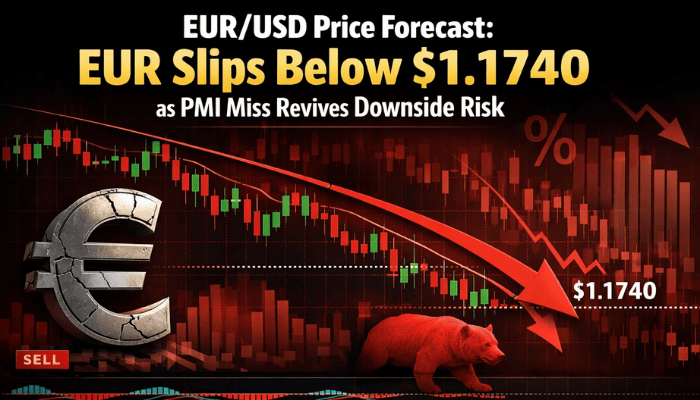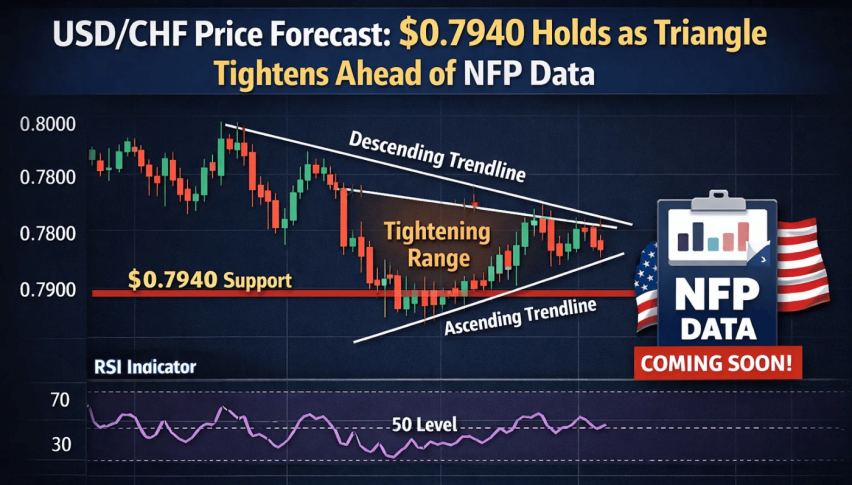Pulling Pips out of Range-Bound Markets
What I love so much about trading the forex market (and other markets), is that there are so many different ways to approach them if you just know how to adapt to the different market conditions. Of course, we all like to trade vigorous trends that seem to run in one direction forever. This is the ideal market condition because you can catch some really big fish with a tiny piece of bait, meaning you can hit a large target by only risking a small portion of your equity. However, when the markets are moving sideways, you will also find great trading opportunities if you know what to look for, and when to pull the trigger. Add some good money management to this, and the next person knocking on your door could be Mr. Handsome Profit himself. Let’s look at how to beat the markets!
Identifying Suitable Ranges
Identifying ranges with good profit potential isn’t too hard, especially if you have some trading experience. And if you’re new to trading, don’t worry, you’ve come to the right place to learn a couple of handy trading tips! Let’s look at a few charts.
 AUD/USD Weekly Chart (2017/02/20)
AUD/USD Weekly Chart (2017/02/20)
I used this chart in one of my previous articles, RBA Minutes to Kick Off This Week’s Action. By the time the price visited the top of the range in this particular instance, it had already touched both the range floor and the range top a couple of times. It’s really important to see that the price repeatedly respects certain levels of support and resistance before we can label the specific chart setup as a range. Only when we’ve seen at least two price reversals at both support and resistance, should we consider using range trading strategies.
In this instance, the doji (the second last candle in this chart) and the doji-like candle preceding it, suggested that there was a good chance that the price would respect the resistance at this range top.
A week after this article, I wrote about the AUD/USD again in another article, named The Aussie is Coming Down! Weekly Timeframe is Haunting the AUD/USD. Here are the charts I used in this article:

AUD/USD Weekly Chart (2017/02/28)
 AUD/USD Weekly Chart (2017/02/28)
AUD/USD Weekly Chart (2017/02/28)
In these two charts, we can see how the pair continued to struggle at the range top resistance. Here is the latest weekly chart of the AUD/USD:
 AUD/USD Weekly Chart
AUD/USD Weekly Chart
At the moment the pair is still in this well-defined range. These last couple of rejection candles which formed at the range top offered some really good selling opportunities, as you can see.
When and How to Enter a Range Trade
A very reliable way to enter trades in ranging market conditions is to utilize candlestick triggers. The reason why this approach is so effective is because it adds the bonus of confirmation. In forex trading, confirmation plays an important role in many different trading strategies.
You see, when a specific instrument is confined to a well-defined range, and the price approaches the range top or range floor, there is absolutely no guarantee that the price action will respect that support or resistance zone. This might be just where the price finally breaks out of the range…and shoots right through your stop loss in no time. Let’s look at an example of a 400-pip range on the USD/CHF:
 USD/CHF Daily Chart (2016)
USD/CHF Daily Chart (2016)
This is a good example of a well-defined range. There were several reversals at the range top and range floor which offered excellent trading opportunities. Of course, the conservative range trader would probably not have traded the swings at numbers one, two, and three, because he or she would have waited for enough evidence to be sure that the technical formation was indeed a proper range. I would personally have traded number two because of the excellent rejection candle which formed at a good weekly level (which you can’t see on this chart without zooming out). We’ll examine number two as well because if you encounter a similar candle at a range floor, it could make you a decent profit if you know how to utilize it. Let’s zoom in so we can examine the different candlestick triggers:
Swing Number 2:
 USD/CHF Daily Chart (2016)
USD/CHF Daily Chart (2016)
This pinbar or dragonfly doji, is a powerful bullish rejection candle worth trading if it’s found in the right location, of course. There are different ways to trade a signal candle like this. In this example, a pending buy order would be placed at the signal candle’s high, which is also called the pinbar’s nose. Stop loss placement would be a few pips below the low of the pinbar. Remember, this entry is taken on a daily chart, so we don’t want to place the stop loss one or two pips below the signal candle’s low. It’s better to give the trade a little bit of breathing space. In this case, the stop loss is about 28 pips below the pinbar’s low.
In this example, there is an important swing high (marked in purple) which preceded the swing low where the signal candle was formed. This was a reasonable target, and as you can see in this chart, it yielded a decent 230 pips. The risk was only 140 pips, so the reward was 1.64 times as much. If you had risked one percent of your equity on this trade, you would have made a return of 1.64%. In this case, the price never came close to the stop loss. What a great trade this would have been!
You might be wondering why the target wasn’t more aggressive. Well, you could have pulled off a much larger target in this instance, but remember, we’re looking at this setup in hindsight. When you’re setting up a range trade, you need to bear in mind that your profit potential in terms of your reward-to-risk ratio, will normally be smaller than when you’re swing trading, or position trading (a position trade is a long-term trade with an objective to exploit major trends). It is important, however, that you don’t use a profit target which is smaller than your stop loss distance. We want to use positive money management at all times. It is just as important to note, that you don’t need massive reward-to-risk ratios to be a profitable trader. You can make money even by using a reward-to-risk ratio of 1:1. If your strategy has a positive win ratio, for example, if you win 60% of the time, you will be making money.
Although the entry order is placed at the nose of the pinbar in this example, you could have entered the trade when the signal candle closed. In that case, you would have used a market order. You would have had slightly less confirmation that the market would move in your trade’s favor, but you would have entered at a better price. The type of entry method you use will depend on the type of candlestick trigger you use. For example, if the signal candle closes really close to its high (or at the high), you would normally enter the trade with a market order as soon as the candle closed. There are other methods of entering the market when rejection candles appear, but we’re only considering these two techniques today.
Swing Number 4
 USD/CHF Daily Chart (2016)
USD/CHF Daily Chart (2016)
In this case, the bullish rejection candle isn’t such a powerful signal candle as the one in swing number 2. The pinbar candle that occurred in swing number 2 has a much larger range. It also closed as a blue candle, and its close is close to its high. These factors are important when gauging the quality of different rejection candles.
Although the signal candle in swing number 4 is a weaker signal than the one in swing number 2, it is still a good signal due to its location. The only way I would trade this type of signal, though, would be to trade a breakout of the signal candle’s high, just like in the first example (of swing number 2).
As you can see in the chart above, this trade setup would have yielded an attractive 2:1 reward-to-risk ratio. Because this signal candle’s range is smaller than the range of swing number two’s signal candle, it was a bit easier to achieve a better reward-to-risk ratio in this case.
Swing Number 7
 USD/CHF Daily Chart (2016)
USD/CHF Daily Chart (2016)
Here you can see that a 2:1 reward-to-risk ratio was achieved with a target close to the middle of the range, which is really good. Once again, the signal candle isn’t too large, which makes it easier to achieve a good reward-to-risk ratio.
Number 9 – The Breakout!
 USD/CHF Daily Chart (2016)
USD/CHF Daily Chart (2016)
Here you would have avoided a loss if you had waited for a proper reversal signal to form at the range top. The bullish candle that pierced the range top in this instance was way too powerful to consider trading against.
In this chart, you’ll see a very large, aggressive blue candle marked “This Candle Spelled Trouble”. This is the candle that formed when Donald Trump was elected as the new American president. If you had been playing this range, this candle alone should have prevented you from entering short positions at the range top. This candle in itself predicted the strong rally which followed. I won’t go into all the details of what makes this candle so dangerous to bearish participants, but just to mention one aspect of it – the downward wick of this candle tells us that there was strong selling on the day, followed by a sharp bullish reversal. This strong push higher by the bulls put tremendous pressure on the bears, which started to squeeze them out of their short trades. Remember, the sellers can only exit their trades by means of buying. So when the sellers closed out their trades on that day, and in the days which followed it, it only increased the buying pressure on this pair. Be careful not to fight exceptionally powerful candles like this one. We need to use much discretion when trading the markets.
In Conclusion
There are other ways to trade ranges without relying on candlestick triggers, but to ‘back’ your trades with price action confirmation can really make a big difference. Rejection candles, which include pinbars, are really effective tools by which you can fine-tune your entries.
Oscillating indicators can be handy when trading ranges, but it’s better to use them in conjunction with candlestick triggers, and of course, support and resistance levels.
When trading ranges, the timeframe you use matters much. A really reliable timeframe to start out with is the daily timeframe. There is money to be made on the lower timeframes as well, but it’s generally harder to be consistently profitable on these.
Talking about profitability, if you’re having a hard time making money in the markets, why don’t you try out our superb forex trading signals. Whether you like free signals or prefer our premium signals, we have what it takes to put dollars into your pockets.
If you’re one of those hands-on traders who likes to conquer the markets by yourself, make sure you check out our forex strategies, forex blog, forex brokers, and live market updates. Don’t go to the battle without the right weapons.
Happy trading!
- Check out our free forex signals
- Follow the top economic events on FX Leaders economic calendar
- Trade better, discover more Forex Trading Strategies
- Open a FREE Trading Account


